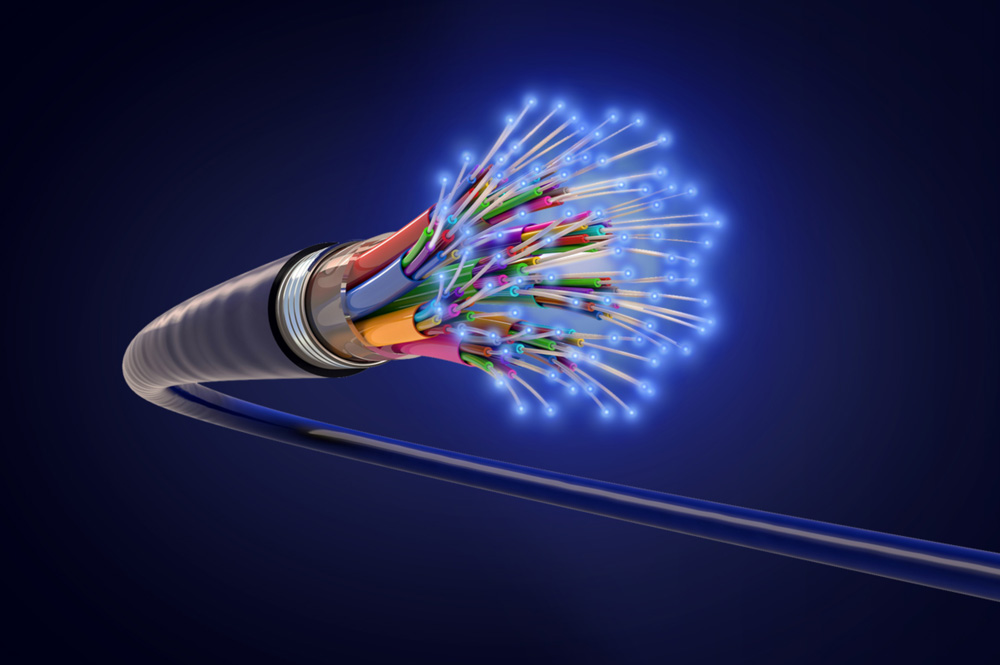Market Summary:
The global fiber optic cable market size was USD 4.43 Billion in 2021 and is expected to register a revenue CAGR of 11% over the forecast period, according to the latest report by Reports and Data.
The key element driving the global fiber optic cable market revenue growth is rising demand for high bandwidth. Fiber optics have a bandwidth of 1 Gbps. Fiber optic networks, with speeds ranging from 5 Mbps to 100 Gbps, are far faster than the fastest copper Internet connections. When compared to copper cables of the same diameter, fibre optic cables can transport significantly more data and provide a considerable boost in signal bandwidth. A 500-meter-long multimode fibre cable, for example, may transmit 1 GHz since the standard Bandwidth-Distance Product (BDP) for multimode fibre is 500 MHz/km. Furthermore, technical improvements in the telecom business have significantly expanded the adoption of broadband network topologies, which is boosting market revenue growth.
Another element driving revenue growth in the fibre optic cable industry is people’s increasing desire for higher speeds. Internet rates of up to 100 Gbps are possible with fibre optic connectivity. These quicker speeds are significant because they prevent internet slowdowns when there is a high demand for internet access. Consumers may expect greater VoIP voice quality, faster data transfers to the cloud, and faster download speeds as a result of fibre optic cable, which is boosting market revenue growth.
Some Key Highlights from the Report
- The worldwide fibre optic cable market is divided into two types: glass and plastic. In 2021, the glass category generated the most revenue. A glass fiber-optic cable is made out of bundled glass fibres. Total reflection at wavelengths ranging from 500 nm to 900 nm enables each individual glass fibre to conduct light from the light source to the fiber’s other end. For high temperatures and durability, glass optical fibres are constructed of small glass strands packed together under a stainless-steel coating. They are attached to specialised photoelectric sensors and direct light from the detecting head to the target.
- In 2021, the North American market will have the highest revenue share. Rising demand for enhanced connectivity and widespread 3G/4G service use in nations such as the United States and Canada is driving revenue growth in the area. Rising demand for fast data and rising demand for high bandwidth are also driving revenue growth in the region’s market. Furthermore, customers are using fibre optic connections for data security, and utilisation of fibre optic connectors in applications such as online gaming, video services, and others has expanded, which is driving revenue development in the region to some extent.
- Prysmian announced a cooperation with Telstra in Australia to construct a brand-new, revolutionary inter-capital fibre optic cable network on May 12, 2022. Telstra will build a brand-new, cutting-edge inter-city redundancy (dual) route as part of the multi-year national fibre optic network project, adding up to 20,000 cable route kilometres of additional fibre optic terrestrial cable, enhancing capacity for both inter-capital travel and rural travel.
Competitive Landscape:
Competitive landscape of the global fiber optic cable market is fragmented with a number of key players operating on global and regional levels. Key companies are engaged in product development and strategic alliances to expand their respective product portfolios and gain a robust footing in the global market. Some major companies profiled in the market report include TE Connectivity, Corning Incorporated, Amphenol Corporation, Infinite Electronics International, Inc., Hitachi Information & Telecommunication Engineering, Ltd., Belden Inc., Ratioplast-Electronics, Panduit, RS Components Pte. Ltd Robinson Road, and NEXANS.
- On 12 May 2022, Prysmian announced the collaboration with Telstra in Australia to develop a brand-new, innovative inter-capital fiber optic cable network. As part of the multi-year national fiber optic network project, Telstra will construct a brand-new, cutting-edge inter-city redundant (dual) route that adds up to 20,000 cable route kilometers of new fiber optic terrestrial cable, hence increasing capacity for both inter-capital travel and regional travel.
Segments Covered in the report
Type Outlook (Revenue, USD Billion; 2019-2030)
- Glass
- Plastic
Cable Outlook (Revenue, USD Billion; 2019-2030)
- Single-Mode
- Multi-Mode
Application Outlook (Revenue, USD Billion; 2019-2030)
- Communication
-
- Telecom
- Premises
- Utility
- Cable Antenna Television
- Industrial
- Military
- Others
- Non-Communication
-
- Sensors
- Fiber Optic Lighting
Deployment Outlook (Revenue, USD Billion; 2019-2030)
- Underground
- Underwater
- Aerial
Regional Outlook (Revenue, USD Billion; 2019-2030)
- North America
- U.S.
- Canada
- Mexico
- Europe
- Germany
- U.K.
- France
- Italy
- Spain
- Sweden
- BENELUX
- Rest of Europe
- Asia-Pacific
- China
- India
- Japan
- South Korea
- Rest of APAC
- Latin America
- Brazil
- Rest of LATAM
- Middle East & Africa
- Saudi Arabia
- UAE
- South Africa
- Israel
- Rest of MEA
Also Read: The Role of Technology in the Future of the Insurance Market
